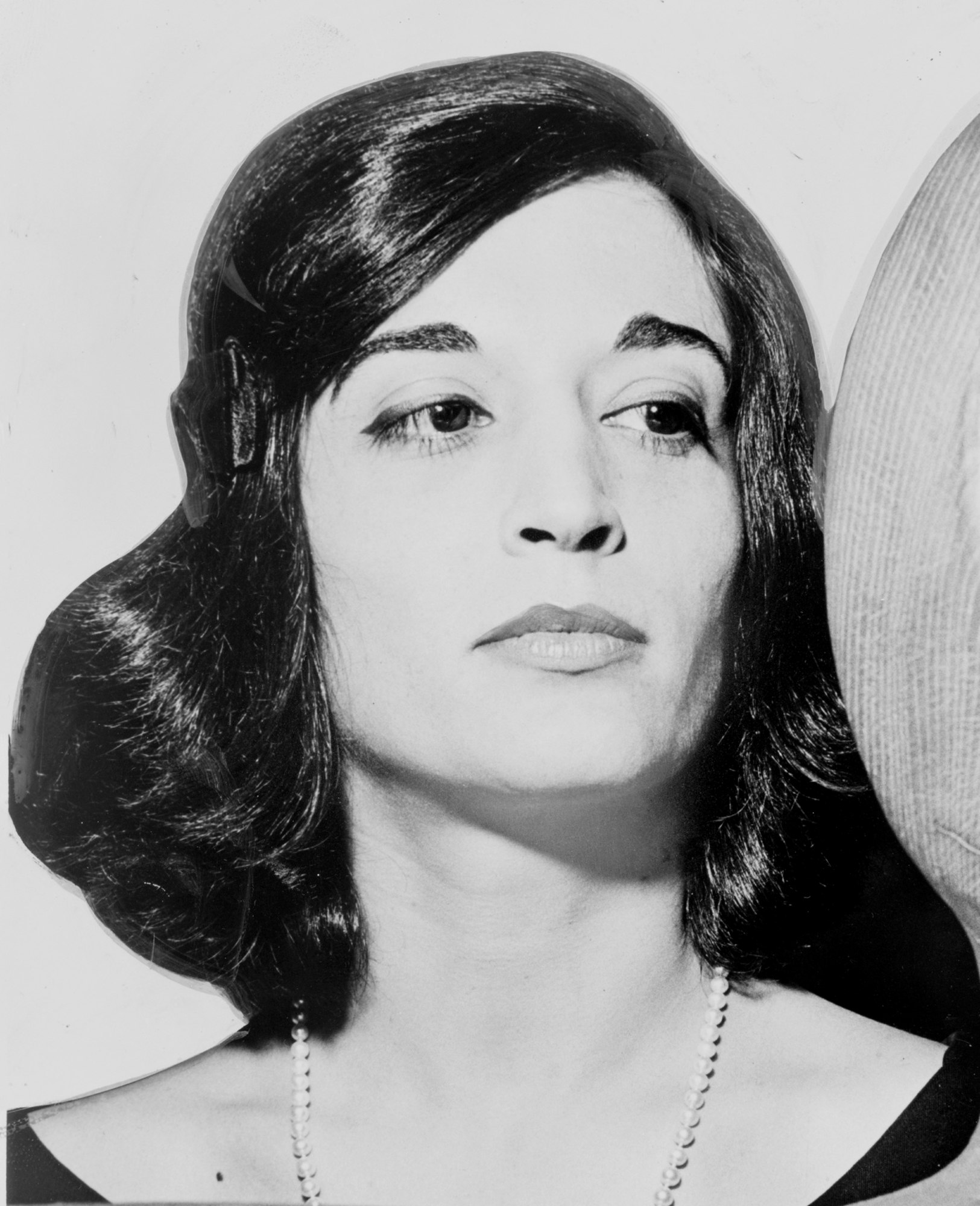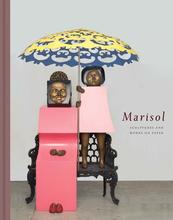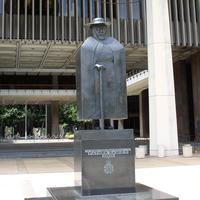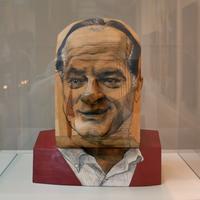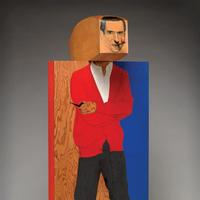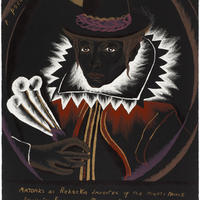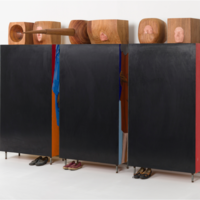More about Marisol
- All
- Info
- Shop

Contributor
"Not Pop, Not Op, It's Marisol!"
That’s what Grace Glueck wrote about her in 1965. Marisol was THE star of the New York art scene in the 1960s...but you've probably never heard of her.
Maria Sol Escobar was born to Venezuelan parents in chic 1930s Paris. This technically makes her French, but she claims she can't remember anything from those first 5 years in Paris. The Escobar family was constantly on the move, with Caracas and New York City as their top picks. When Marisol was 11 her mother Josefina committed suicide. Because of this, Marisol decided she would never talk again. Except at school, of course. (Try explaining that to your teacher.)
At the age of 16 her dad moved the family to LA and this is where she started painting and drawing. During these years you could find her on all fours until her knees would start to bleed, and she would tie ropes around her wrists, mimicking saints and martyrs. I wouldn’t say Marisol was a religious loony though, more like a tormented teenager and artist.
LA wasn’t really her thing, so she moved back to Paris and studied art at École des Beaux Arts ánd the Académie Julian. She was only to stay in Paris for a year though, because like every freakin’ aspiring artist back then, Marisol moved to NYC. There she finally found ”people like herself” like Hans Hoffmann, the only teacher she ever learned something from. Take that, fancy French “ecoles”!
In 1960s NYC there was this thing called “the Club”, a.k.a. the abstract expressionist circle jerk. Female members were basically nonexistent (not to mention gay or communist ones) but they were graciously allowed to attend the meetings. As if...
Well, Marisol did attend those meetings and left a lasting impression. What this badass lady did was totally unheard of. I absolutely love her for doing this and so should you. She arrived at the Club wearing a white mask and it drove those snobs completely crazy. Story goes, the men screamed and stamped their feet like little children. “Take off that goddamn mask!” they shouted. She did, only to reveal that her face was painted white, just like the mask. Safe to say Marisol was done with Abstract Expressionism and ready to do her own thang. Within a few years she was so incredibly popular, 3,000+ people would wait in line to see her show. Around that same time she starred in some Andy Warhol movies, which earned her the patronizing nickname “First Lady of Pop-Art”. This celebrity status could help her art career, so she sucked it up. Marisol wasn’t Pop Art though, her wood carvings where one of a kind. Her uniqueness may be the reason historians tend to (conveniently) forget about her.
At the end of the '60s Marisol was done with the NYC art scene, so she took a five year hiatus. She traveled the world to find her true self. The last few years had been a drug and sex infused rollercoaster, so I guess she needed it. Yet, when she returned to NYC a lot had changed and people just weren't interested anymore. Her success and stardom faded and Marisol died in obscurity.
Featured Content
Here is what Wikipedia says about Marisol Escobar
Marisol Escobar (May 22, 1930 – April 30, 2016), otherwise known simply as Marisol, was a Venezuelan-American sculptor born in Paris, who lived and worked in New York City. She became world-famous in the mid-1960s, but lapsed into relative obscurity within a decade. She continued to create her artworks and returned to the limelight in the early 21st century, capped by a 2014 major retrospective show organized by the Memphis Brooks Museum of Art. The largest retrospective of Marisol's artwork, Marisol: A Retrospective has been organized by the Buffalo AKG Art Museum and curated by Cathleen Chaffee for these museums: the Montreal Museum of Fine Arts (October 7, 2023 – January 21, 2024), the Toledo Museum of Art (March–June 2024), the Buffalo AKG Art Museum (July 12, 2024 - January 6, 2025), and the Dallas Museum of Art (February 23–July 6, 2025).
Although it was supplemented by loans from international museums and private collections, the exhibition drew largely on artwork and archival material Marisol left to the Buffalo AKG Art Museum as a bequest upon her death.
Check out the full Wikipedia article about Marisol Escobar

